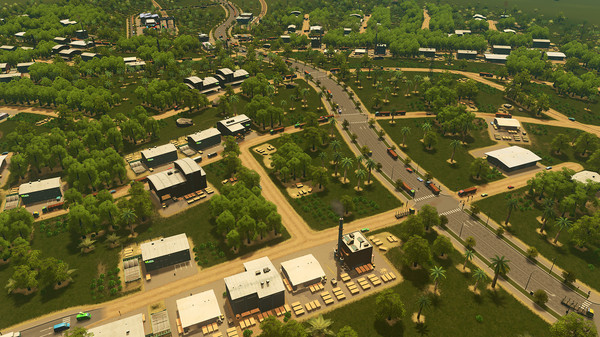Want to build an awesome city of your own? Read our Cities Skylines guide for some tips and tricks that you should know.
A city-building simulation game, Cities: Skylines was released by Paradox Interactive in 2015. It is a single-player simulation of city-building with an open-ended strategy. Controlling the zoning, road placement, taxation, public services, and public transportation of an area is a way in which players engage in urban planning.
A player’s role in the game is to maintain the city’s budget, health, employment, and pollution levels, among other things. In addition, players have the ability to build a city in a sandbox mode, which allows them to express their creativity more freely. Here is a Cities Skylines guide with some of the best tips and tricks.
Cities Skylines Guide: Trash
You have only two options for getting rid of the trash in your city: landfills, which fill up fast, and incinerators, which produce pollution. Ensure there are enough trucks for this purpose. However, there is another thing to watch out for – unused trucks follow traffic. You must ensure that traffic is flowing smoothly.
Don’t build 4-way intersections
Make sure your crossings aren’t too close together; they shouldn’t be more than 10 squares apart. When joining roadways, the circular ‘hook points’ are employed for this purpose. Instead of four-way intersections, alternate three-way junctions. If you absolutely must have an interchange, keep it modest, efficient, and infrequent.
Set it and forget it

You may “set it and forget it” if you generate a net profit if you have enough police, fire, and health coverage, as well as landfills and other services. You may easily leave the game running in windowed mode while planning your future development. Popups will cause the game to pause, which is a good thing since as your city grows, so will the requirements of its citizens.
When your city “levels up,” the game will pause to ensure that your cims do not leave with their new expectations. This is wonderful at lower levels when all you want to do is get a few items unlocked and some money so you can start growing properly.
Cities Skylines Guide: Traffic
The amount of traffic in your city determines how successful your city will be because once traffic hits the city, you’re screwed and you’ll probably never be able to earn enough money to recover. While there are too many traffic tips to mention, remember that most of your traffic jams begin at the intersections that were laid out for you at the beginning.
You can move people around on larger roads and keep costs low by using smaller roads. A one-way road is the best way to avoid the small roundabout, as it tends to clog up too quickly. Red lights cause traffic to slow down at intersections, so you should avoid them at all costs.
Cities Skylines Guide: Tax

In general, the more valuable the land, the more tax it generates. In addition, there is a loss component to this – the additional taxes may not be able to cover the upkeep on any improvement. All improvements should be placed in zones that touch the most zones.
Build big roundabouts
In low-traffic areas, roundabouts are useful at the beginning, but they are less effective with more traffic, in which case you should incorporate bridges, tunnels, and additional lanes to improve flow. Make room for future development by laying large roundabouts.
Cities Skylines Guide: Buses
In general, buses are the easiest type of transport to turn a profit due to their low cost, easy setup, and ease of use. There are practically no restrictions on the number of buses that can be created by a depot, so you need only one. A depot costs less per bus when there are more lines.
Building an elementary school and a medical clinic should be your priority

To build your city, you’ll need a medical facility and an elementary school. If you want to grow your city in the near future, these structures should be strategically located between where you are and where you want to go. A well-educated and healthy populace is the foundation of a flourishing city. As your city grows to fulfill the requirements of its inhabitants, continue to create these amenities in newer neighborhoods.
Do not build unnecessary things
If you want to build successfully in Cities: Skylines, you should build slowly. You should always check the demand meter in the bottom right corner of your screen to make sure everything is in order. By checking it, you can determine which city areas need further development.
Keep an eye on how you will expand each area in the future in order to remain successful. Do not overdevelop. If your city continues to grow, make sure it has enough amenities to support the growing population.
Plant trees and small forests

Residents living nearby can benefit from trees and small forests by reducing noise pollution. See where there are noise problems by pulling up the overlay. Creating tree lines and mini-forests is a great way to limit the spread of noise, which allows you to put loud buildings like transportation hubs closer to residential areas.
For more Guides, Tips, and Tricks
- How to beat Arlo in Pokemon Go – Best Counters
- Animal Crossing New Horizons – A Complete Fishing Guide
- Phantomwing Island Guide – Tips and Tricks
You can also check out our dedicated Video Games Guides section.
